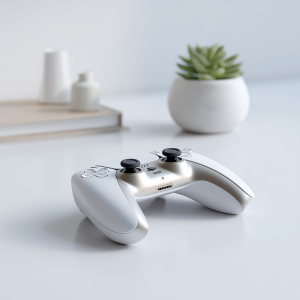How Bullet Journaling Can Transform Your Productivity
Have you ever felt so swamped by tasks that you’re not even sure where to begin? That’s where bullet journaling steps in. This simple-yet-versatile system brings planning and creativity together in one place. Whether you’re juggling tight deadlines at work, trying to keep up with household errands, or navigating personal goals, bullet journaling can offer the clarity you need.
Key Takeaways
- Bullet journaling combines organization and creativity, making it a flexible tool for managing tasks and goals.
- It’s easy to start: all you need is a notebook and pen.
- Regular updates, even brief ones, keep the system running strong.
- Customization is powerful—tailor your journal to highlight what matters most.
- Consistency is key, and don’t worry if you miss a day or two.
What Makes a Bullet Journal Work?
A bullet journal isn’t just a notebook; it’s a customizable productivity system. Here’s the basic framework:
- Index: Your personal table of contents.
- Future Log: For capturing long-term goals or events.
- Monthly Log: Gives you a monthly snapshot of tasks and events.
- Daily Log: The day-to-day action plan.
- Collections: Specialty pages like habit trackers, brainstorming notes, or project planning.
“Think of your bullet journal as a flexible roadmap—it’s not about perfection, it’s about practical planning.”
This system adapts easily, whether you’re dealing with demanding office hours or a chaotic home schedule. You can mold it to fit your lifestyle, whether you need to manage complex work projects, personal wellness goals, or a bit of both.
| Component | Purpose |
|---|---|
| Index | Quick navigation |
| Future Log | Long-term planning |
| Monthly Log | Month-at-a-glance tasks/events |
| Daily Log | Day-by-day task and event tracking |
| Collections | Focused lists (e.g., habit trackers, ideas) |
How to Set It Up (Step by Step)
- Index: Reserve the first couple of pages for an index. Write down page numbers as you go so you never lose track of your content.
- Future Log: Dedicate a few pages to map out major events or deadlines coming up in the next several months.
- Monthly Log: For each month, use one page to list the dates in a vertical column. Next to each date, note tasks, important appointments, or reminders. See this guide to starting a bullet journal for more details.
It’s totally okay if your pages look a bit messy at first, as the goal is functionality. If you like a polished look, you can create or download templates.
Custom Layouts
- Daily Logs: Jot down your daily to-dos, events, and quick notes. Use bullets or symbols to keep it organized.
- Trackers: Habit trackers for exercise, water intake, or reading can give you a clear view of progress.
- Collections: Pages for anything from meal planning to project timelines.
“Your journal is your creative playground—structure it in a way that feels natural.”
Keeping It Effective Over Time
Regular Check-Ins
One key difference between a bullet journal that thrives and one that gets forgotten is consistency. Devote at least 5–10 minutes each morning or evening:
- Morning Check-In: Glance at your schedule. Mark top priorities.
- Evening Wrap-Up: Cross off completed tasks, migrate unfinished ones, and reflect on the day.
By updating regularly, your journal becomes a living tool rather than a static notebook.
Adapting for Different Needs
- Work-from-home professionals might add separate sections for personal vs. professional tasks.
- Busy parents can keep a small daily box for family routines or kids’ schedules.
- Those who struggle with focus (like mild ADHD) might benefit from chunking tasks into smaller time blocks or using color-coded trackers.
Advantages & Challenges
Why Bullet Journals Shine
- Personalization: Make your own spreads for everything from finances to fitness.
- Mindfulness: Writing tasks down can boost focus and clarity.
- Creative Outlet: Doodle, color-code, or decorate your pages—or keep ’em minimal. It’s entirely up to you.
Common Stumbling Blocks
- Time Investment: Creating fancy spreads can eat up time if you get too ambitious.
- Inconsistency: If you skip a few days, you might feel guilty and quit. Don’t! Just keep going where you left off.
- Overwhelm from Too Many Options: Simplify by focusing on what you truly need first.
“It’s not about how pretty your pages are, it’s about whether they help you get stuff done.”
For more advice on stepping up your bullet journaling, visit these productivity tips.
Conclusion
Starting a bullet journal doesn’t require fancy tools or artistic skills—just a willingness to put pen to paper and experiment. The real power lies in tailoring the system to your life. Miss a day? No big deal. Adjust your setups over time, and you’ll discover a balanced approach to daily tasks, goals, and personal growth.
So grab that notebook and a pen. Give it a shot—because bullet journaling might just become the easiest way to organize your life and free up the mental space you need to focus on what truly matters.
Frequently Asked Questions
What is bullet journaling?
Bullet journaling is a flexible method of organizing tasks, goals, and reflections in one notebook, often using symbols and logs for quick reference.
How do I start?
Begin with a blank notebook, add an index, future log, and monthly log. Learn more here. Keep it super simple at first.
Do I need to be artistic?
Not at all. Bullet journaling is about functionality, and doodles are just optional extras.
How often should I update my journal?
Try for daily updates. Even 5 minutes can help you plan and review effectively.
What are the main benefits?
It helps you stay organized, track habits, and reflect on your progress. It’s also a calming, creative activity for many.
What if I prefer digital tools?
That works too! Some people use apps or tablets. The key is finding a system you’ll stick with.
What if I skip a day (or a week)?
Don’t stress—resume where you left off. The point is steady progress, not perfection.









